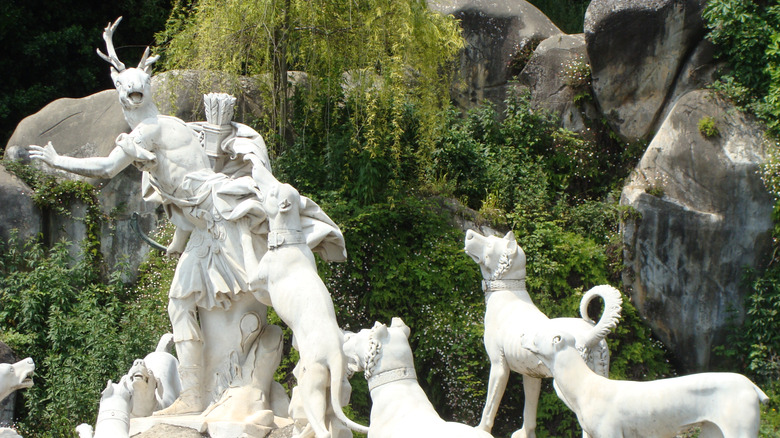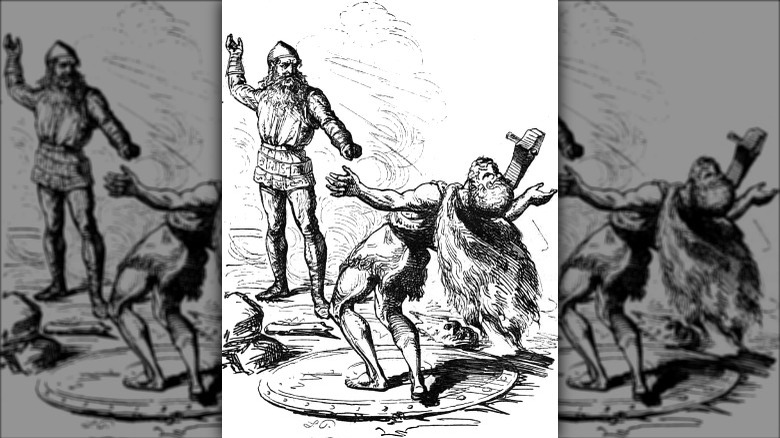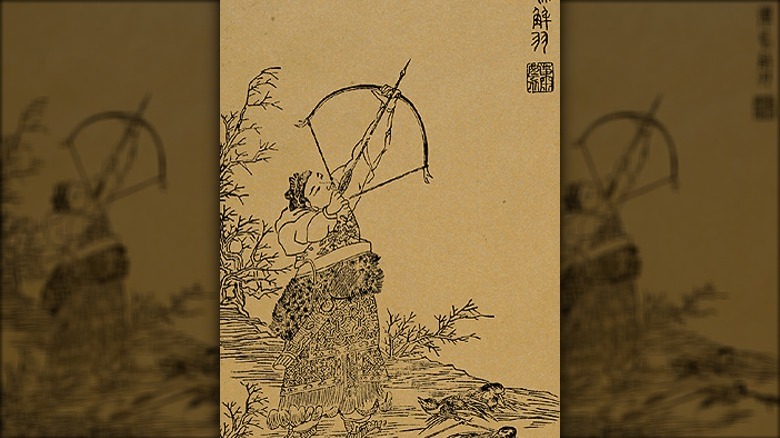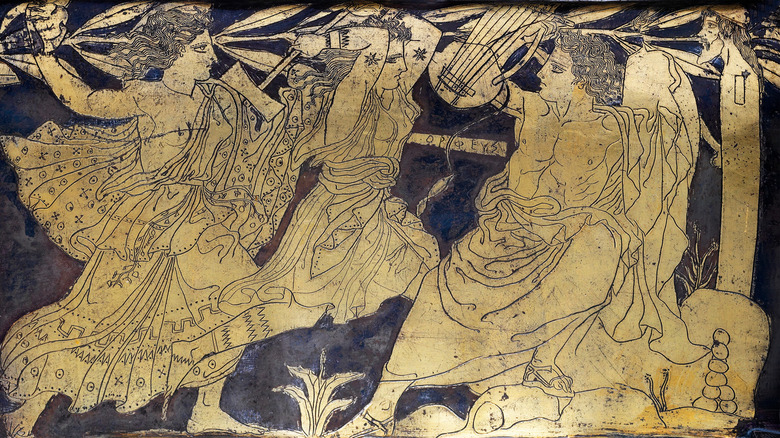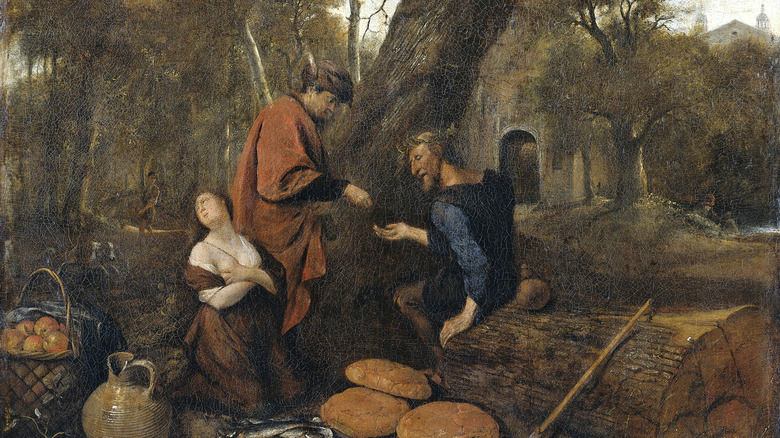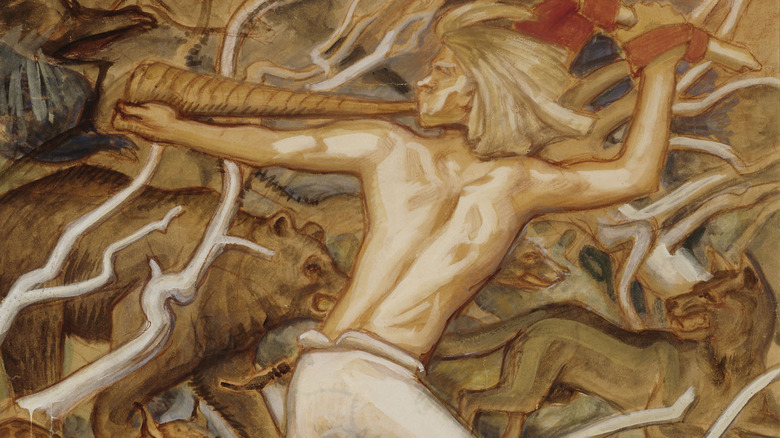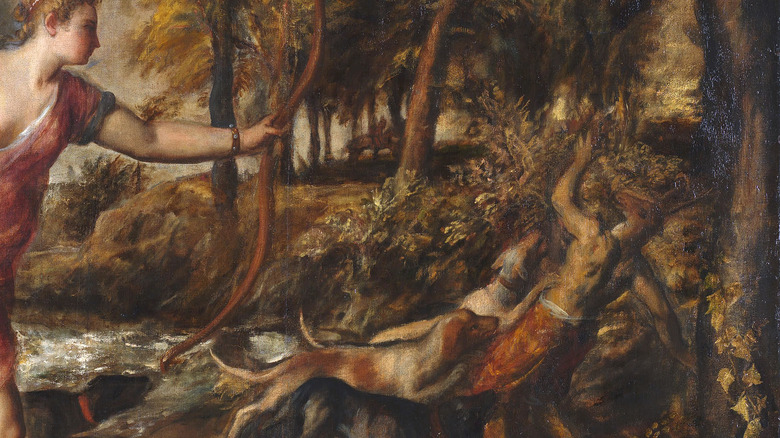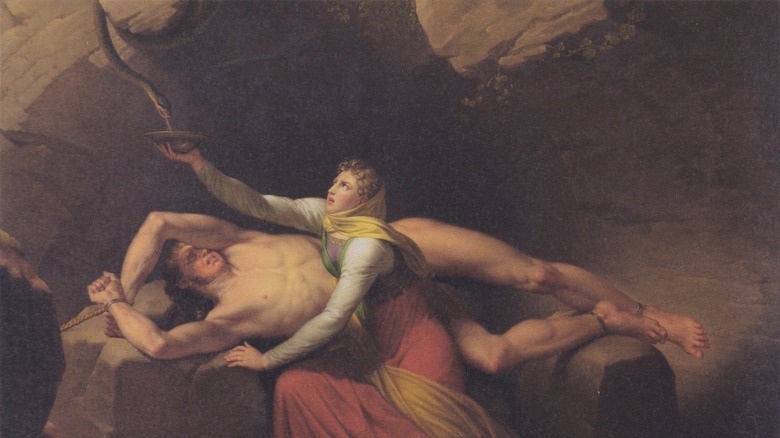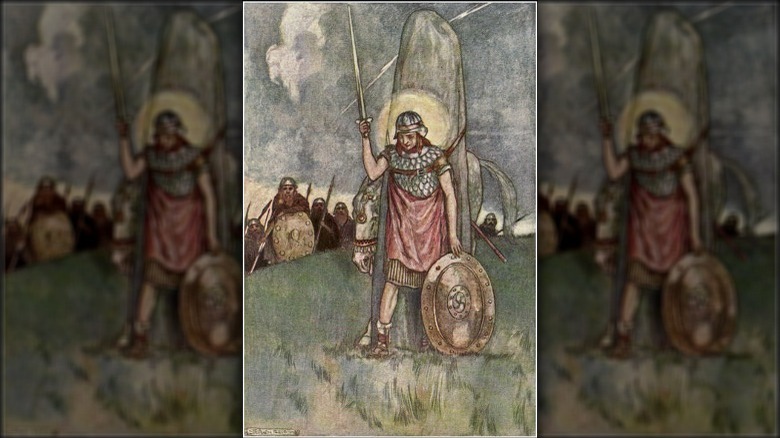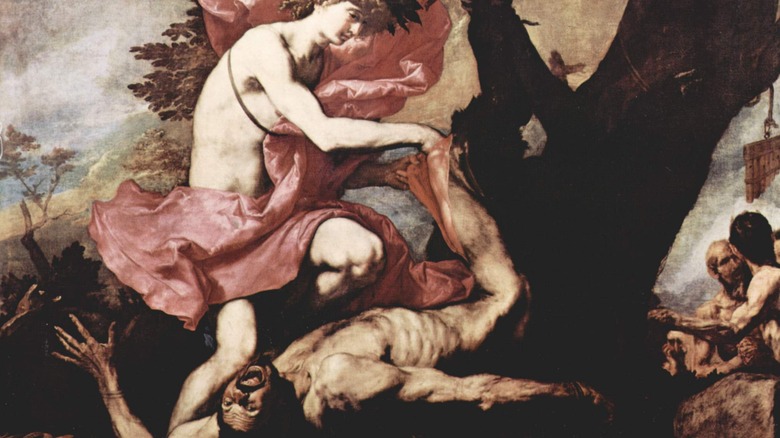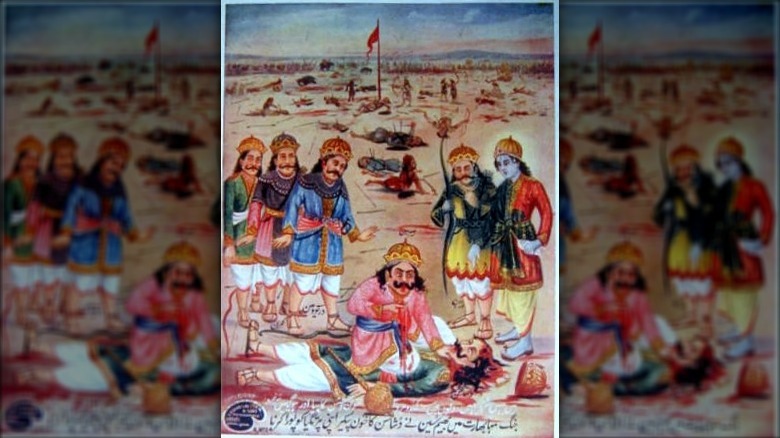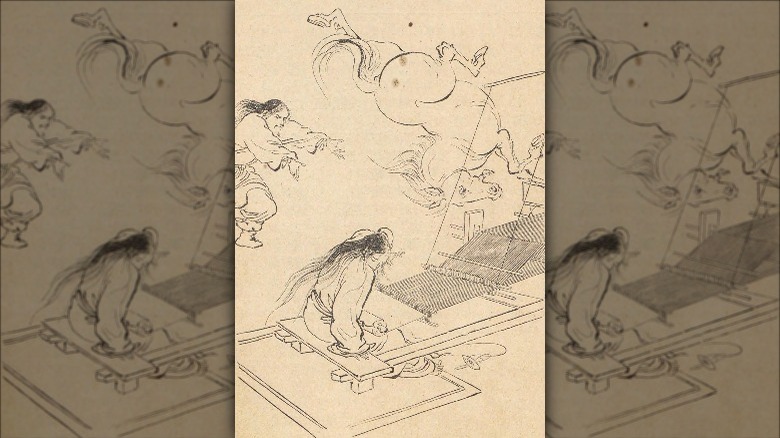The 12 Most Brutal Deaths In Mythology, Ranked
Mythology and legends from across the world tell all sorts of stories, ranging from the creation of the world to the epic travels of great heroes, the fantastic origins of day-to-day objects, and even the forthcoming end of the world. Many of the greatest works of mythology, however, focus on bloody topics such as war and political intrigue, as well as personal jealousies and petty grievances. As a result, mythic tales from all across the world are filled with death, murder, and suicide of humans and gods alike. And just as the adventures and deeds of its heroes and monsters are larger than life, so too are the deaths larger than life (or death?).
Here, selected from mythologies across the world, are 12 of the bloodiest, bone-crunchiest, limb-rending-est, most brutal, gruesome deaths to make you wince in pain and squirm in your seat just reading about them, ranked from least brutal (but still pretty brutal) to most.
12. Hrungnir
The Norse god of thunder Thor is known for his reputation of smashing giants and trolls, but some giants and trolls got more smashed than others. Perhaps the most graphic death at the hands of the thunder god comes in the story of Hrungnir, said to be the strongest of the frost giants. According to a story recorded by Snorri Sturluson, Thor has gone to the east to kill trolls, and in the meantime, his father Odin rides into the land of the giants where he meets Hrungnir. Long story short, the two get into an argument that ends with a drunken Hrungnir threatening to destroy Asgard and run off with its goddesses, so all the gods call upon Thor, who hears them from far away and comes running.
In great anger, the thunder god and the giant agree to battle in single combat. Hrungnir arms himself with a giant whetstone, which he hurls toward Thor. Likewise, Thor throws his trusty hammer Mjöllnir, which hits the whetstone in midair and splits it in two. One piece lodges itself in Thor's forehead, but Hrungnir gets the worst of it: Mjöllnir continues on its flight, "[strikes] Hrungnir in the middle of the head, and smashe[s] his skull into small crumbs" (via Encyclopedia Mythica). The giant's corpse falls on Thor, who is pinned underneath until his 3-year-old son Magni is the only god strong enough to lift the giant's leg from his father's neck.
11. Houyi
Houyi (or Hou Yi or Hou-yi) is a divine archer from Chinese mythology who gains great fame by coming down from Heaven to save the Earth when it is about to burn to a crisp under the rays of 10 suns. Houyi shoots down nine of the 10 with his bow made of tiger bone and dragon tendon. A later adventure sees him winning the right to marry Chang'e, which was maybe not actually such a great prize.
You see, after numerous other heroic deeds, a goddess rewards Houyi with an elixir of immortality, which will allow him to become a god once again after he has discarded godhood to save the Earth. He does not take the elixir right away, because he doesn't want to leave his wife behind. However, Chang'e finds the elixir while Houyi is away and takes it, becoming a goddess and floating away to the moon. In his grief for his loss and anger at his betrayal, Houyi becomes a terrible tyrant, becoming as much a menace as he had been a hero. One of the prime targets of his wrath is his apprentice, Feng Meng, who swears to kill his master. Feng Meng tries to shoot Houyi while the two are hunting, but Houyi is able to shoot away his student's arrows. Finally, Feng Meng makes a club out of a peach tree and bludgeons the once-great archer to death.
10. Orpheus
If you're familiar with the story of the musician Orpheus from Greco-Roman mythology, it's probably from the story of him and his wife Eurydice, who died on their wedding day, and how he went down to the Underworld to rescue her and then lost her at the last second. What you may not know is what happened after that. In his grief, Orpheus went out into the world to play his music and he never loved another woman. In fact, according to the Roman poet Ovid, Orpheus invented being gay so that he would never have to be with a woman who wasn't Eurydice.
In the early Greek versions of Orpheus' story, Orpheus offends the god Dionysus by offering worship to the rival god Apollo. As a result, Dionysus sends his followers, a pack of frenzied women called maenads, to kill him. Ovid says instead that the maenads want to kill Orpheus because he had turned gay and refused their affection. Either way, the women rip Orpheus to pieces with rakes, stones, and bare hands (this also happens to the Theban king Pentheus), until as Ovid (via Theoi) says, "his song unheard, his blood reddened the stones," and they throw the dismembered bits in the river. His head continues singing and prophesying as it floats until it reaches the island of Lesbos, where they build a shrine for the disembodied head to recite its prophecies.
[Featured image by Gorgonchica via Wikimedia Commons | Cropped and scaled |CC BY-SA 4.0]
9. Erysichthon
Erysichthon was the king of the Greek region known as Thessaly, and he is best known for incurring the wrath of the goddess Demeter. You see, the king one day goes out to a forest grove with 20 giant dudes with the intention of cutting down all of the trees in that grove in order to build a massive feast hall for himself. What he doesn't know is that this grove is sacred to the goddess Demeter. Demeter, even from a distance, can feel the pain and hear the groaning of her sacred trees as Erysichthon's men hack away at them with their axes. To make matters worse, when Demeter shows up and tells the king to stop, he threatens her with his ax.
Demeter, shocked, leaves in a fury and summons the god (in the Greek version) or goddess (in the Roman version) Limos, who represents insatiable hunger. King Erysichthon is subsequently cursed with a gnawing hunger that he can't tame, no matter how much he eats. He spends all his money on food, he eats all his own livestock, he even sells his own daughter for food money (pictured), and he ends up a beggar in the streets. And after all his money and food are gone, Ovid writes (via Theoi) that "the ill-starred wretch began to gnaw himself, and dwindled bite by bite as his own flesh supplied his appetite."
8. The Maiden of Pohjola
The Kalevala is the national epic of Finland, compiled in the 19th century by Elias Lönnrot from numerous songs and stories in the oral tradition. The poem tells the stories of generations of heroes from Finland's mythological past. One of the central figures of the Kalevala is Ilmarinen, a divinely-powered smith who created the dome of Heaven and the sampo, a mysterious item that in some versions is a pillar that holds up the sky, but in others is a mill that produces limitless wealth in the form of gold, salt, and flour. Either way, the sampo is central to the entire work, so Ilmarinen is pretty important.
Ilmarinen's reward for building the sampo is marrying the Maiden of Pohjola, and together they buy the young man Kallervo as a slave. However, Ilmarinen's wife mistreats Kallervo, with the last straw being that she bakes him a loaf of bread with a rock in the middle, and when Kallervo tries to cut it, he breaks his knife, which is the only thing he has left from his family. In anger, Kallervo uses magic to summon packs of wolves and bears and makes them look like Ilmarinen's cattle. He tells his mistress he's brought the cows home and she should go milk them. When the mistress goes outside, the bears and wolves tear her to pieces, although she was presumably confused as to why she was being eaten by her own cows.
7. Yamato-Totohimomosohime
In the chronicle of Japanese history and mythology called the Nihon Shoki (or Nihongi), one of the major figures is Omononushi, a kami (deity or spirit) associated with Mt. Miwa, the most sacred mountain in Japan. In fact, Omononushi plays a major role in the creation and development of the terrestrial world, for which Mt. Miwa was his reward.
Among numerous other adventures, the Nihon Shoki tells the story of Omononushi marrying an emperor's cousin, a princess with the somewhat unwieldy name of Yamato-Totohimomosohime. However, like in the Greek myth of Cupid and Psyche, the princess never sees her husband in the daytime, and he only comes to her under the darkness of night. She begs her husband to let her gaze upon his beauty, and he eventually relents, saying that if she waits until the next morning, when she opens the case with her toiletries in it, she will see his true form. However, he says, she must swear not to freak out. The princess takes the box and dutifully waits until morning to open it. When she does, what she sees is a coiled-up little snake. Contrary to her promise, she does indeed freak out, which brings great shame upon both her and her husband. In her embarrassment, she stabs herself in the genitals with a chopstick until she dies. As a result, the place where she is buried becomes known as the Chopstick Tomb.
[Featured image by Saigen Jiro via Wikimedia Commons | Cropped and scaled | CC0]
6. Actaeon
Greco-Roman myth records the life and death of the young hunter Actaeon, who is the grandson of Cadmus, the founder and first king of the city of Thebes. He is trained as a hunter by the good centaur Chiron, who would later train such heroes as Achilles, Jason, and the medicine god Asclepius. One day, after a particularly successful hunt, Actaeon sends his servants home and walks through the woods until he accidentally stumbles across a hidden spring sacred to the goddess Artemis. As it happens, at that very moment, the goddess and the various nymphs of her retinue are bathing in the spring, having just completed a hunt themselves.
When Artemis and her followers — all of whom are ardently devoted to preserving their chastity — see a man coming out from the foliage, they naturally assume the worst. The goddess, naked and furious, transforms Actaeon into a terrified stag. The prince's 50(!) hunting dogs see the frightened deer and their instincts kick in. Actaeon tries to call them off, but in animal form, he can no longer speak. The poet Ovid (via Theoi) says, "They held their master down till the whole pack, united, sank their teeth into his flesh ... Now they are all around him, tearing deep their master's flesh, the stag that is no stag; and not until so many countless wounds had drained away his lifeblood, was the wrath, it's said, of chaste [Artemis] satisfied."
5. Nari
Arguably the most famous children of the Norse trickster god Loki are the monstrous ones he had with his lover, the giantess Angrboða: the wolf Fenrir, the world serpent Jörmungandr, and the goddess of the Underworld, Hel. But he also had legitimate children with his wife Sigyn, namely the sons Váli and Nari (also spelled Narfi). These sons and their mother are primarily known for how they were used in the gods' punishment of Loki for his role in the death of the god Balder.
Despite having played no role in the murder of Balder themselves, Váli and Nari are used by the gods as tools of Loki's imprisonment and torture. The gods transform Váli into a bloodthirsty wolf, in which form he turns to his brother Nari and tears him to pieces. The gods then take Nari's intestines and use them like rope to tie Loki down to some flat stones, after which Nari's guts are magically transformed into iron. As Loki is held in place by his son's entrails, a venomous snake is positioned over him so that its venom drips into Loki's face. But poor, faithful Sigyn stands by him with a bowl to catch the venom, but whenever the bowl fills up and she turns to empty it, the venom lands in Loki's face and his shudders cause earthquakes. Despite this, Loki lives, but innocent Nari got torn to bits for no fault of his own.
4. Cu Chulainn
One of the most famous warriors of Irish myth is Cu Chulainn, the Hound of Ulster. Much is told of his superhuman strength, as well as a supernatural berserker rage that essentially turns him into an unstoppable killing machine with no ability to discern friend from foe. Like the Greek warrior Achilles, Cu Chulainn is prophesied to earn great fame in battle but die young.
You see, Cu Chulainn's great strength is only granted to him on the condition that he never breaks either of two rules: he must eat any food offered to him by a woman, and he must never eat dog meat. As you might guess, there comes a time when a woman offers him dog meat, and trapped in a paradox, Cu Chulainn eats the meat and loses his strength. His foes craft three magic spears destined to kill three kings: the first kills Cu Chulainn's driver, king among charioteers; the second his horse, king of the steeds. The third pierces Cu Chulainn's guts, sending them spilling out. In order to die on his feet like a warrior, Cu Chulainn ties himself upright to a standing stone with his own intestines and fights until a raven lands on his shoulder, proving he has died. But even then, when the enemy king approaches, Cu Chulainn's sword arm falls from where he has pointed it to the sky and chops the king's head off.
3. Marsyas
According to Greek mythology, Marsyas was a satyr who came across a flute lying on the ground. The flute had been invented by Athena, but she discarded the instrument because she didn't like the way her cheeks puffed out when she played it. The satyr adopted the flute for himself and got so good at playing it that he foolishly challenged Apollo, the god of music, to a battle of the bands, flute vs. lyre. The Muses themselves are chosen to be the judges, with the prize being that the winner can do whatever he wants to the loser.
In round one, Marsyas plays the flute so well that even the Muses can't decide if Apollo's lyre-playing is better. In round two, Apollo plays his lyre upside-down and challenges Marsyas to do the same, but the satyr says this is impossible on the flute. So instead, Apollo sings along to his lyre playing, which Marsyas can't match, so Apollo wins. As punishment for Marsyas' hubris in challenging a god, he has the satyr tied to a tree and flayed alive. The poet Ovid (via Theoi) says, "The whole of him was one huge wound, blood streaming everywhere, sinews laid bare, veins naked, quivering and pulsing. You could count his twitching guts, and the tissues as the light shone through his ribs." The satyr's flowing blood becomes a river, which is later named the Marsyas.
2. Dushasana
The two major epics in Hindu mythology are the Mahabharata and the Ramayana. Of the two, the Mahabharata tells the tale of a generations-long war between two related but rival dynasties for the right to the throne. The primary characters of the central plot of this massive epic are the five divine princes of the Pandava dynasty, who share one wife in common between them, named Draupadi. Their foes are the Kauravas, who are led by their eldest brother Duryodhana. Within the Mahabharata's colossal length — nearly 2 million words, almost 10 times the length of the Iliad and the Odyssey put together — possibly the most brutal death happens to Dushasana, the second oldest of the Kauravas.
Dushasana is very loyal to his wicked older brother and is thought to be the most foolish and emotional of the older Kauravas. After Duryodhana wins Draupadi from the Pandavas in a game of dice, Dushasana attempts to humiliate her by ripping her clothes off in public (it doesn't work, for magic reasons). Enraged, the Pandava brother Bhima vows on his eternal soul that he will rip open Dushasana's rib cage and drink his lifeblood. Later they meet in battle and Bhima makes good on his promise: Bhima knocks Dushasana from his chariot with a mace to the head, digs his heel into Dushasana's throat, rips open his chest, drinks his blood, and, finally, chops off his head.
1. Maidservant of Amaterasu
The two most significant deities of Japan's Shinto religion are the sun goddess Amaterasu and her younger brother and frequent rival, the storm god Susano-O. From a natural point of view, it makes sense that the sun and storms are always at odds, and so these two divine children are commonly bickering, though in at least one instance it goes way too far.
One day Amaterasu and Susano-O find themselves engaged in a trial of skill against each other, and long story short, Susano-O declares himself the winner and celebrates by destroying Amaterasu's rice fields, filling up all the ditches on her farm, and smearing own his poop all over her house, specifically the dining area. Amaterasu manages to stay calm despite all of this provocation, but Susano-O's troublemaking only becomes more violent. As Amaterasu sits weaving in her hall with some maidservants, Susano-O tears open the roof and throws in a horse that he has skinned alive. The impact of the horse forces one of Amaterasu's maidservants to fly back in terror, where she is impaled through her genitals on the loom's shuttle and dies. Amaterasu is so enraged at this extremely gruesome death of her servant that she flees to a cave where she hides for some time, plunging the earth into total darkness and allowing the land to be overrun by evil spirits.
